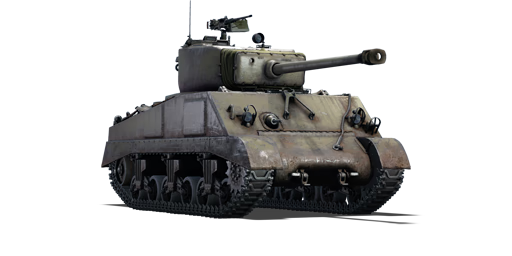The M4A2 (76) W Sherman was the second variant of the late-generation Medium Tank M4 (Sherman) family. It was outfitted with a modified T23 turret which accommodated the M1 tank gun, giving it a total length of 7.57 m (25 feet). The range was 161 km (100 miles) with the GM 6046 diesel engine which held approximately 673 litres (178 gallons) of fuel. The total weight increased to 33.3 tons. The upper glacis was 108 mm (4.25 inches) thick and sloped at 47°, with huge hatches. Many M4A2 (76) Ws were supplied to the USSR for the Soviet Army as part of the World War II lend-lease program (mainly because it had a diesel engine like most Soviet Army tanks). The engine, which was powered by the same General Motors 6046 twin diesel as the M4A2, was reliable as well as easy to maintain. Until May 1945, around 3,230 M4A2 (76) Ws units were delivered.
Introduced in Update 1.45 "Steel Generals", the M4A2 (76) W replaces the cast hull of the M4A1 (76) W with an uninterrupted, fully welded hull's upper front armour plate that slopes at 47°. As the M4A2 (76) W has an exceptionally high profile, it is difficult to drive around undetected, making it an easy target for enemies. However, by making use of its strong mobility early in the battle, it is possible to get into strategic locations and adopt a hull-down position to obtain the first shot at the adversaries. Another improvement is the relocation of the ammunition storage to the centre of the tank, making it harder to target than in early-generation M4 Sherman variants. However, this is negligible given that the hull's upper front armour plate is unable to resist any shells from enemy tanks such as Tiger Is, Panthers, and T-34s. As a result, the best chance of survival is to use terrain elevation and gun depression in a hull-down position to optimize the effectiveness of the hull's upper front armour plate.
















